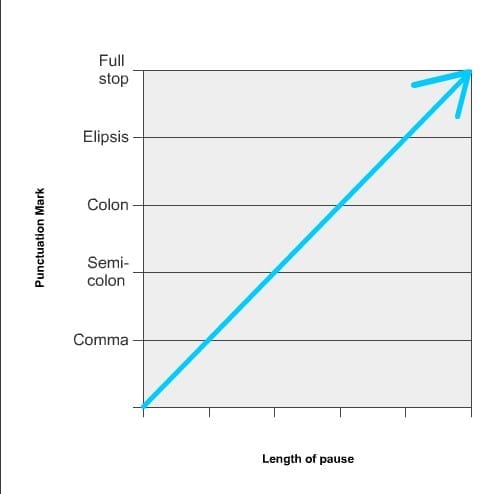Punctuation marks are pretty complicated and getting your head around them won’t happen overnight. One of the most common uses of many punctuation marks is to give the reader an indication of when they should pause or take a breath. However, such pauses need to be managed carefully: you certainly do not want to leave your reader hyperventilating after a continual stream of shallow breaths forced by over-punctuation. Nor do you want them to be gasping for breath at the end of a long sentence that completely omits any punctuation marks.
It is also important that you use the right punctuation mark to correspond with the length of pause that the sentence requires. Here’s a quick overview of five punctuation marks that can be used to denote pauses, together with their corresponding duration of pause.
If you think you could benefit from more help with your punctuation, take a look at our free punctuation cheat sheet.
This is useful for a quick overview of punctuation marks and their associated pauses; however, if you need more detailed information and facts, do check out our comprehensive guide to the 14 punctuation marks.
Is your punctuation letting you down? Check out our online proofreading services for a helping hand.

